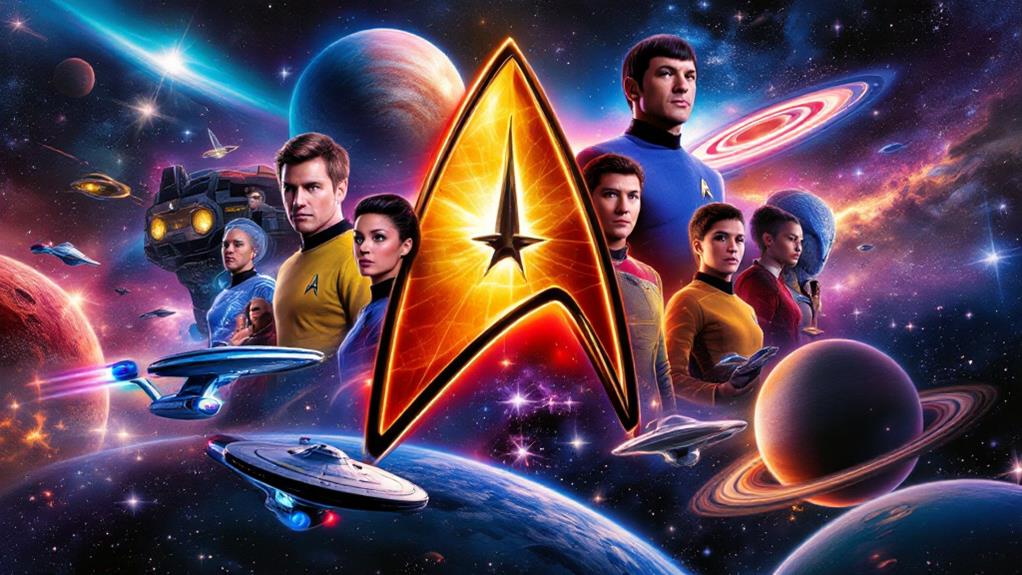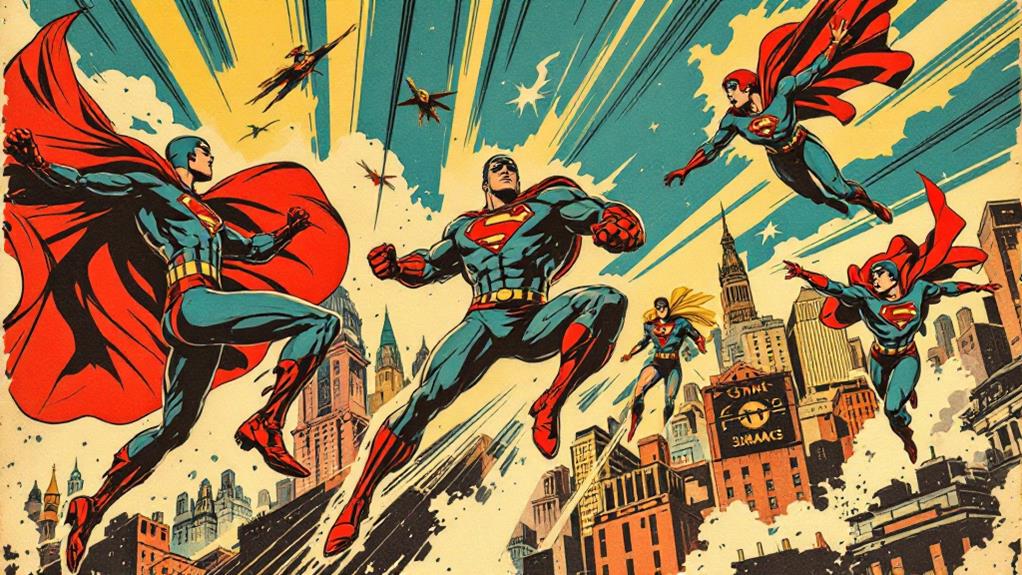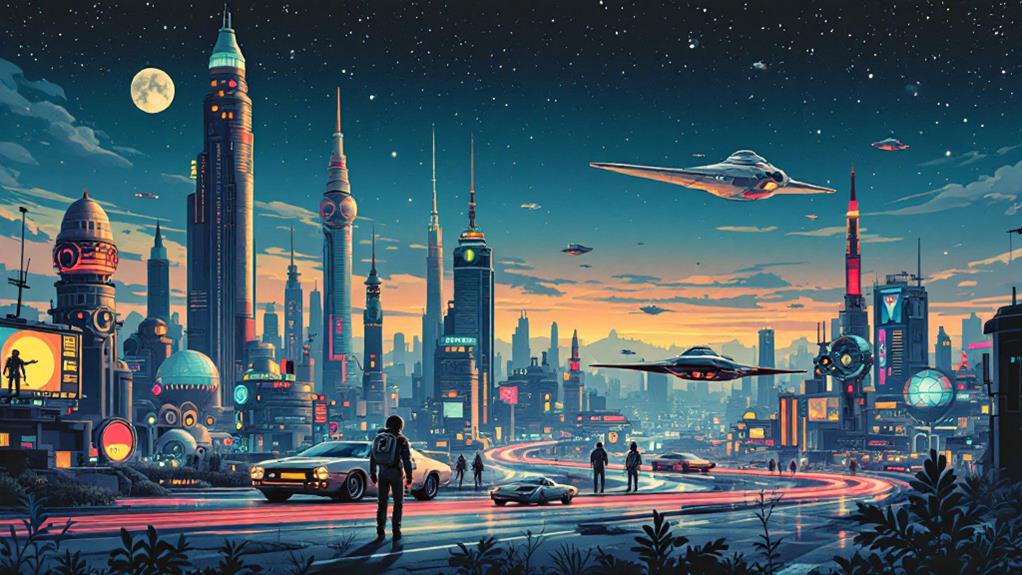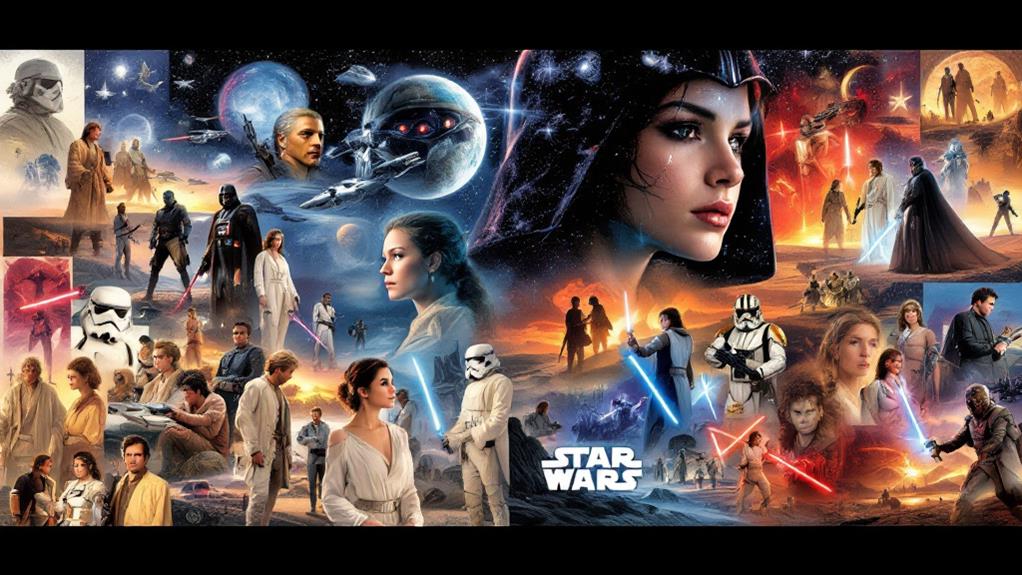Who Were the Original Marvel Superheroes? A Journey Through Comic Book History
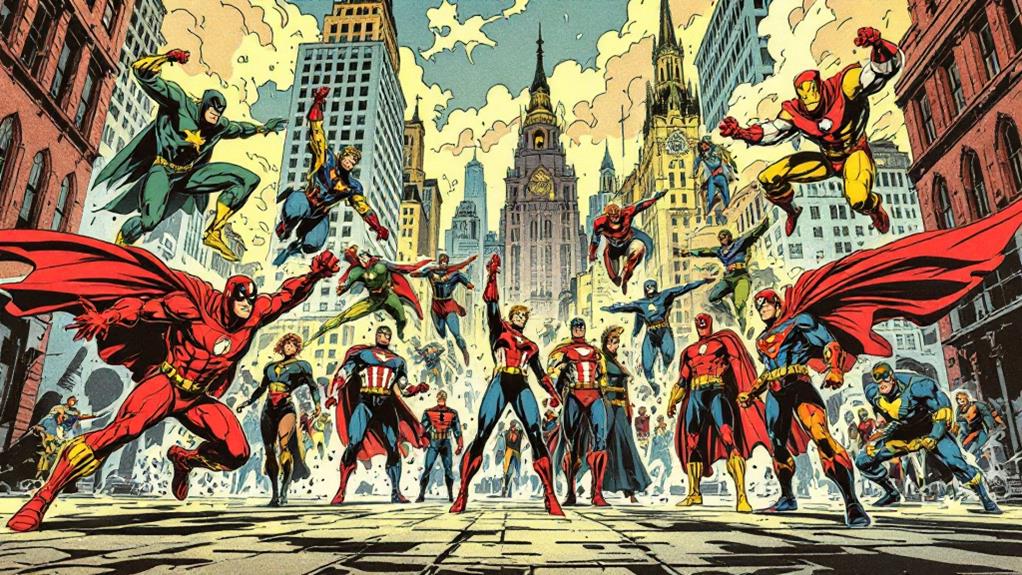
You're stepping into the universe of Marvel superheroes where it all began in 1939 with Timely Publications. Meet the Human Torch, an android with fiery powers that challenged typical hero norms. Plunge with Namor the Sub-Mariner, a complex prince torn between land and his underwater domain. Then, stand tall with Captain America, a symbol of hope during World War II, wielding his iconic shield. These heroes were born not just with powers but with human flaws and moral struggles. As their stories evolved, they reflected societal shifts, paving the way for Marvel's richly layered cosmos. There's more to uncover ahead!
Origins of Marvel Comics
The origins of Marvel Comics are a fascinating exploration into the world of superheroes and imagination. You begin this adventure during the Golden Age of comics, a time when the seeds of the Marvel Universe were initially planted. It all started with Timely Publications in 1939. Timely introduced readers to new comic book characters who would later become iconic superhero archetypes. This period saw the emergence of early creators who were crucial in shaping the stories and visuals that would define the genre.
As you investigate deeper, you'll find that these early creators, like Joe Simon and Jack Kirby, crafted narratives that captivated audiences and laid the groundwork for what Marvel would become. They introduced characters with extraordinary abilities, yet grounded in relatable human experiences. These superhero archetypes were not just about power but also about the struggles and moral dilemmas faced by everyday people.
Marvel's beginnings with Timely Publications set the stage for a universe rich with diverse comic book characters. Though the company would later evolve into the Marvel Comics we recognize today, the essence of imagination and innovation from its origins continues to resonate throughout the Marvel Universe.
The Human Torch
Flames burst onto the scene in the form of the Human Torch, one of Marvel's earliest and most iconic characters. Born during the Golden Period of comics in 1939, the Human Torch was unlike any superhero seen before. Created by Carl Burgos, this fiery android, Jim Hammond, challenged superhero archetypes with his unique origin story. Unlike the traditional human superheroes of that time, the Human Torch was an android, a synthetic man able to ignite his body into flames and fly.
You can't overlook the cultural impact the Human Torch had during this time. He was a symbol of innovation and change, reflecting the technological advancements of the moment. His character development was groundbreaking, as he grappled with themes of identity, humanity, and self-control. The Human Torch wasn't just about flashy battles; he was a character that explored what it meant to be human—imbuing depth into superhero storytelling.
Throughout Marvel's history, the Human Torch paved the way for future generations of superheroes, setting the stage for complex characters who would follow. He remains an enduring symbol of the Golden Age's creative spirit, inspiring countless heroes and fans alike.
Namor the Sub-Mariner
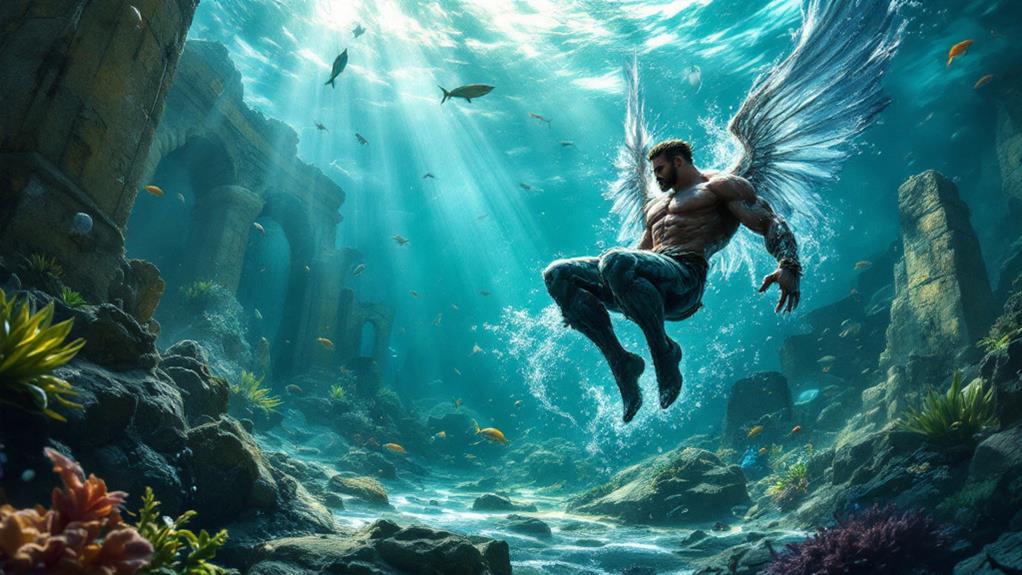
While the Human Torch ignited the skies, Namor the Sub-Mariner ruled the seas with equal fervor. You find yourself exploring his domain, where Namor's powers set him apart as one of Marvel's original superheroes. Born to a human sea captain and an Atlantean princess, Namor embodies the bridge between two worlds. His hybrid nature grants him incredible abilities, including superhuman strength, flight via tiny ankle wings, and the power to communicate with marine life.
You can't ignore the deep ties Namor holds to Atlantis mythology. As the Prince of Atlantis, he protects his underwater kingdom with unwavering loyalty. His complex character often oscillates between hero and anti-hero, driven by conflicting allegiances and a fierce pride in his heritage. This duality makes Namor a compelling figure, often challenging surface dwellers' encroachments on his domain.
Throughout comic book history, Namor's presence underscores Marvel's richness in exploring diverse narratives. His stories probe into environmentalism, identity, and sovereignty, all while maintaining the thrilling action you crave in superhero tales. So, when you think of Marvel's origins, remember Namor's watery territory, where the line between heroics and vengeance blurs beneath the waves.
Captain America's Debut
Courage and resilience marked the debut of Captain America, a character born out of necessity during a turbulent period. You find yourself in the early 1940s, a time when the world grappled with the harsh realities of World War II. Enter Steve Rogers, a scrawny young man with an unwavering sense of justice and a heart full of bravery. Despite his physical limitations, Steve's determination to fight for his country never wavered. This is where the Super Soldier Serum comes into play. It transformed him into Captain America, the epitome of human potential, both physically and morally.
Captain America didn't just wield strength; he symbolized hope. His iconic weapon, Captain America's Shield, became a symbol of defense and protection, reflecting his unwavering resolve to safeguard those who couldn't defend themselves. The shield, with its distinctive star and stripes, resonated with readers, embodying freedom and justice. As you explore Captain America's debut, you see how he wasn't just a superhero; he was a light of resilience in a world desperately in need of heroes. His story inspired a generation to stand up against tyranny and fight for what's right.
Evolution of Early Heroes
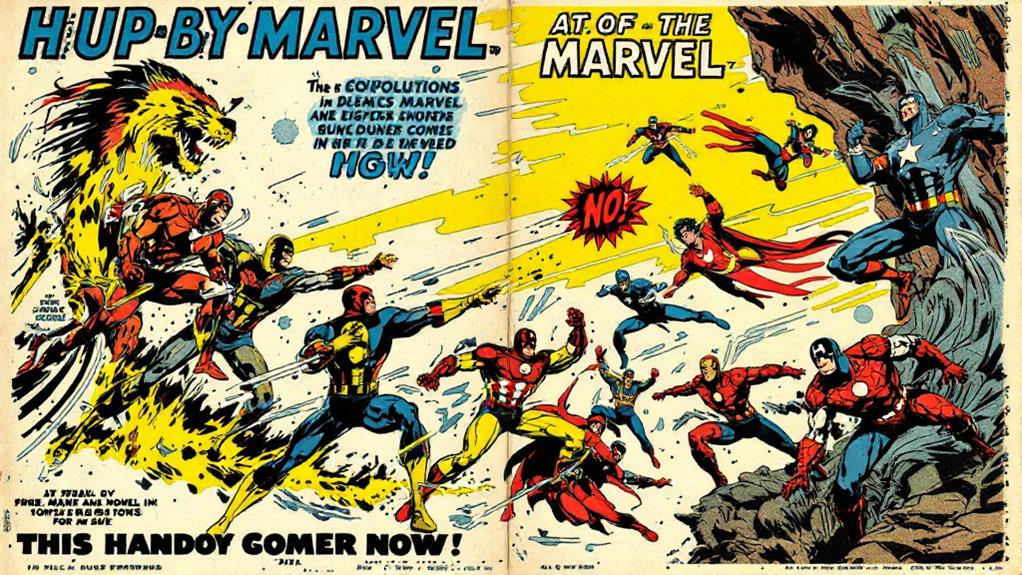
Amidst the backdrop of a world in turmoil, early superheroes emerged as lighthouses of hope and resilience. These heroes, crafted from the depths of imagination, served not just as entertainment but as guiding lights steering society through challenging times. You can see how these early superhero archetypes—characters like the noble warrior or the reluctant hero—were crucial in shaping narratives that resonated deeply with readers.
As you explore their quests, you'll notice evolving narratives reflecting societal changes. Initially, superheroes were often depicted as paragons of virtue, battling clear-cut villains. Over time, however, their stories became more complex, mirroring the intricacies of the real world. This evolution saw characters grappling with moral dilemmas and personal struggles, making them more relatable and human.
You'd find that heroes like Namor and the Human Torch began as straightforward figures but gradually developed layers, reflecting shifting attitudes and cultural landscapes. These changes weren't just about character growth; they also highlighted broader themes of identity and purpose. By examining these early stories, you'll uncover how these evolving narratives laid the groundwork for the rich, multifaceted universe Marvel fans cherish today.
Legacy of Marvel's Pioneers
Celebrating the legacy of Marvel's pioneers means acknowledging the indelible mark they've left on popular culture and the shaping of modern storytelling. When you think about comic book influence, Marvel's early creators—like Stan Lee and Jack Kirby—come to mind. They weren't just crafting stories; they were setting the stage for superhero archetypes that would resonate for generations. These pioneers introduced characters with human flaws and complex personalities, forever changing how audiences perceive heroes.
You see their influence every time you watch a Marvel movie or read a comic book. Their groundbreaking work laid the foundation for a universe where superheroes aren't just larger-than-life figures but relatable beings with personal struggles. The archetypes they developed, like the reluctant hero or the morally conflicted savior, have become staples in storytelling not just within comics but across all media.
Marvel's pioneers also pushed boundaries regarding diversity and representation, ensuring that every reader could find a part of themselves in their stories. By doing so, they expanded the reach of comic book influence, making it a universal language that speaks to everyone. Their legacy is a demonstration of how visionary storytelling can transform an industry.
